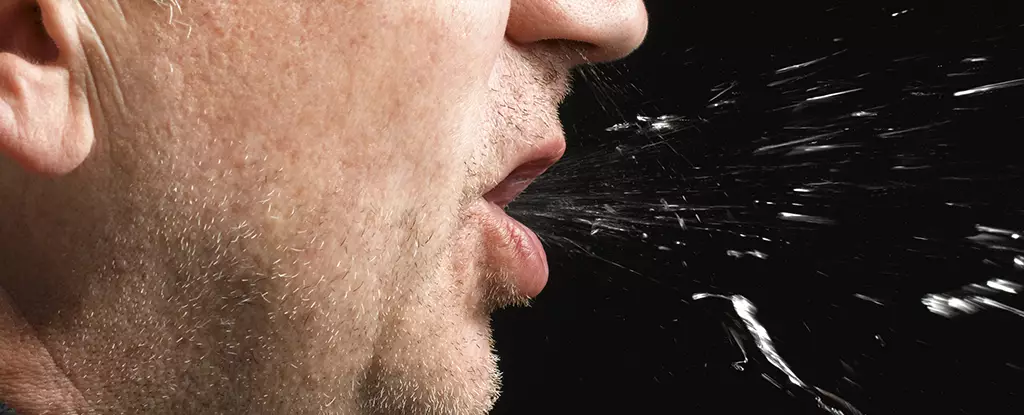In the context of infectious diseases, understanding how far respiratory droplets travel is not just a matter of scientific curiosity—it is a fundamental requirement for public health safety. Recent research led by a team from France has opened new avenues in this domain by meticulously measuring the behavior of droplet emissions during everyday activities such as talking, coughing, and breathing. These findings are crucial for informing policy decisions, recommending health measures, and ultimately minimizing the spread of infectious agents.
Droplets ejected from the oral cavity can carry pathogens, making it essential to discern their dynamics. The inability to accurately predict how these droplets behave after they are expelled can lead to inadequate health guidelines and a misunderstanding of transmission risks. The research aims to bridge the existing gap and clarify the uncertainties that have hindered effective public health responses, especially during outbreaks like the COVID-19 pandemic.
Innovative Measurement Techniques
The study employed Interferometric Laser Imaging for Droplet Sizing (ILIDS), an advanced method that leverages high-speed cameras to assess droplet size and speed as they pass through a laser beam. This technological approach is revolutionary because it offers precise measurements that can enhance our understanding of droplet dynamics. The researchers invited 23 volunteers into the laboratory setting to evaluate their droplet emission patterns under various conditions—both masked and unmasked.
The results revealed a significant variation in droplet sizes, ranging from 2 to 60 micrometers when participants were engaged in speaking and coughing, while breathing produced smaller droplets between 2 and 8 micrometers. This nuanced insight is valuable; it not only underscores the variations in droplet behavior due to different speech modalities but also reflects the potential for higher transmission rates during activities like coughing.
The Role of Masks in Mitigating Risk
One of the key takeaways from this research is the efficacy of masks in reducing droplet transmission. The findings indicate that tissue or surgical masks can block between 74% to 86% of respiratory droplets across various exhalation scenarios. This statistic serves as a powerful endorsement for mask-wearing as a preventative measure against airborne infections.
However, it is crucial to recognize the limitations of mask efficacy, which can be influenced by various factors, including the type of mask, fit, and individual variability among users. These nuances must inform public health messaging as we strive for effective strategies that account for both biological and environmental differences.
Variability Among Individuals and the Superspreader Phenomenon
The research also highlights a compelling point about individual variability. The study demonstrated that personal differences among participants—such as facial structure, airflow dynamics, and respiratory patterns—affect droplet emission. This variability is significant in understanding the concept of “superspreaders,” who are individuals capable of transmitting a virus at a much higher rate than their peers.
Recognizing this variability, the researchers emphasize the necessity for further exploration. Future studies could benefit from evaluating a broader and more diverse sample of volunteers, which would offer insights into individual emissions and mask efficacy more comprehensively.
Implications for Future Research and Public Health
The implications of this research extend beyond academic curiosity; they are imperative for future public health policies and infection control strategies. The data collected is poised to guide the development of actionable guidelines for the general population, emphasizing the importance of masking and other protective measures. Improved understanding of droplet dynamics can inform localized health measures tailored to specific environments, such as schools, hospitals, and public transit systems.
As the team expresses interest in undertaking broader studies, it is evident that ongoing research is critical to uncovering the intricacies of droplet dynamics. The complexity of infection transmission warrants a sustained effort in scientific investigation, and the findings from this research provide a promising foundation for future breakthroughs in public health preparedness. The potential for significant advancements in controlling disease spread lies in the meticulous work of researchers who are committed to rigorously examining the unseen forces that affect our health.


Leave a Reply